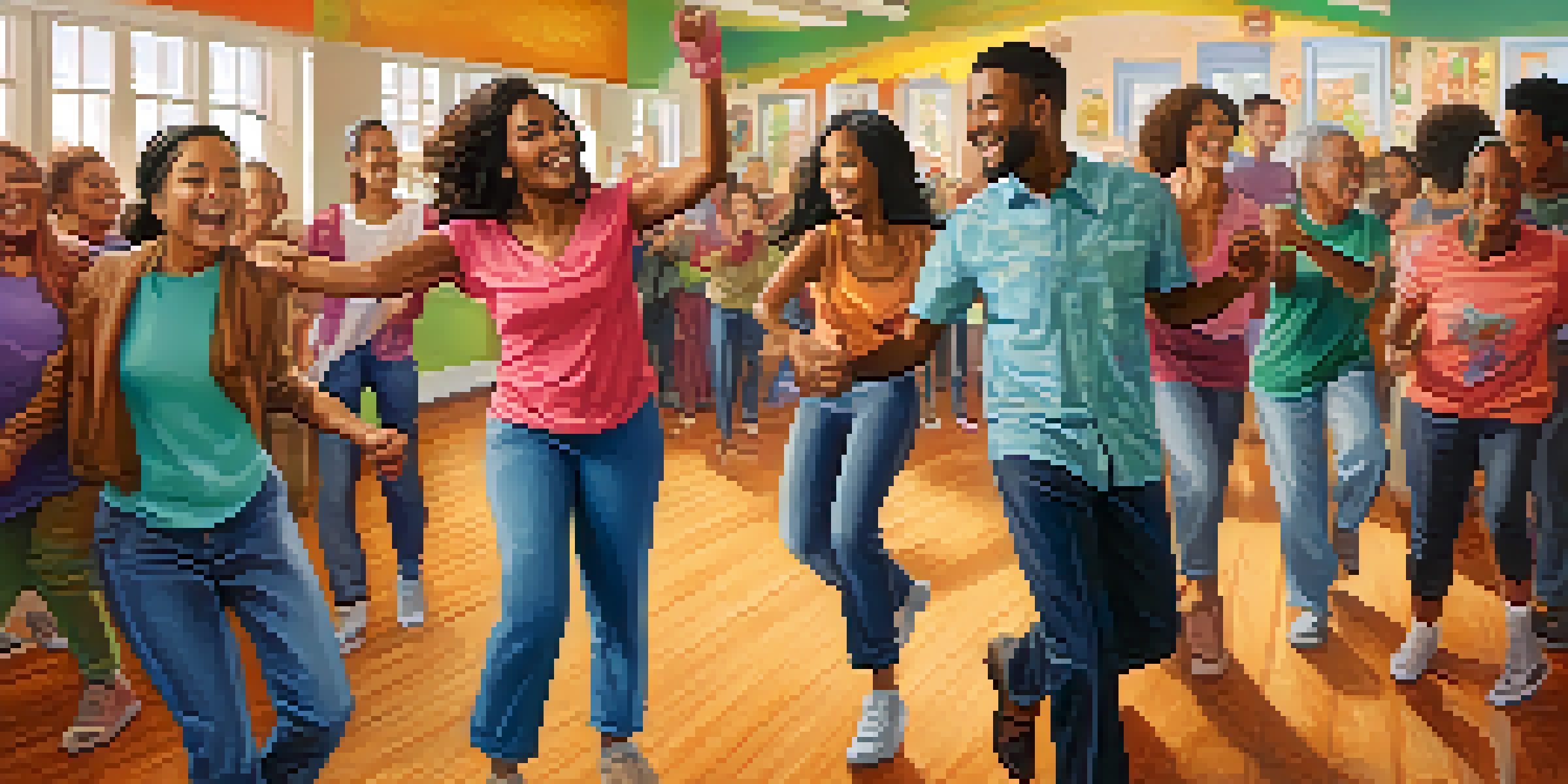Barriers to Participation in Community Dance Programs: A Study

Understanding Community Dance Programs and Their Importance
Community dance programs serve as a vibrant space for creativity and connection, fostering a sense of belonging among participants. These initiatives cater to individuals of all ages and backgrounds, promoting physical health and emotional well-being through movement. By encouraging self-expression, community dance programs can break down social barriers and build stronger local networks.
Financial Barriers: The Cost of Participation
One of the most significant barriers to joining community dance programs is the financial aspect. Many individuals find it challenging to afford class fees, costumes, or travel expenses, which can add up quickly. Additionally, low-income families may prioritize essential needs over extracurricular activities, making it difficult for their children to engage in dance.
Financial Barriers Limit Participation
High costs associated with classes and materials can deter individuals, particularly from low-income families, from joining community dance programs.
Accessibility Issues: Physical and Geographical Challenges
Accessibility plays a crucial role in determining who can participate in dance programs. For instance, individuals with disabilities may struggle to find inclusive classes that accommodate their needs. Furthermore, geographical barriers, such as transportation difficulties or living in remote areas, can prevent potential dancers from joining local programs.
Cultural and Social Barriers to Participation
Cultural perceptions surrounding dance can greatly impact participation rates. In some communities, dance may not be seen as a valuable activity, leading to hesitation from potential participants. Additionally, social stigma or fear of judgment can discourage individuals from stepping outside their comfort zones, limiting diversity in dance classes.
Accessibility Hinders Engagement
Physical and geographical challenges can prevent many potential dancers, especially those with disabilities, from participating in available dance programs.
Time Constraints: Balancing Dance and Daily Life
In today's fast-paced world, finding time to engage in community dance programs can be a challenge. Many individuals juggle work, family responsibilities, and other commitments, leaving little room for extracurricular activities. This time crunch can discourage even the most enthusiastic dancers from pursuing their passion.
Lack of Awareness: Promoting Dance Programs Effectively
Many people simply aren't aware of the community dance programs available to them. Effective promotion is essential for attracting participants, yet some programs struggle to reach their target audience. Utilizing social media, local events, and community outreach can significantly increase visibility and interest in dance initiatives.
Community Support Encourages Involvement
A strong, supportive community can help individuals overcome barriers to participation by fostering an inclusive and welcoming environment.
The Role of Supportive Communities in Overcoming Barriers
Building a supportive community can help individuals overcome barriers to participation in dance programs. When local leaders, organizations, and residents come together to encourage participation, it creates an inviting atmosphere. This sense of community can motivate individuals to join and feel welcomed, regardless of their background or experience.
Strategies for Increasing Participation in Dance Programs
To enhance participation rates, community dance programs can implement various strategies. Offering financial assistance, flexible scheduling, and inclusive classes can make a significant difference. By actively engaging with the community and addressing its unique needs, programs can create a more inviting environment for potential dancers.